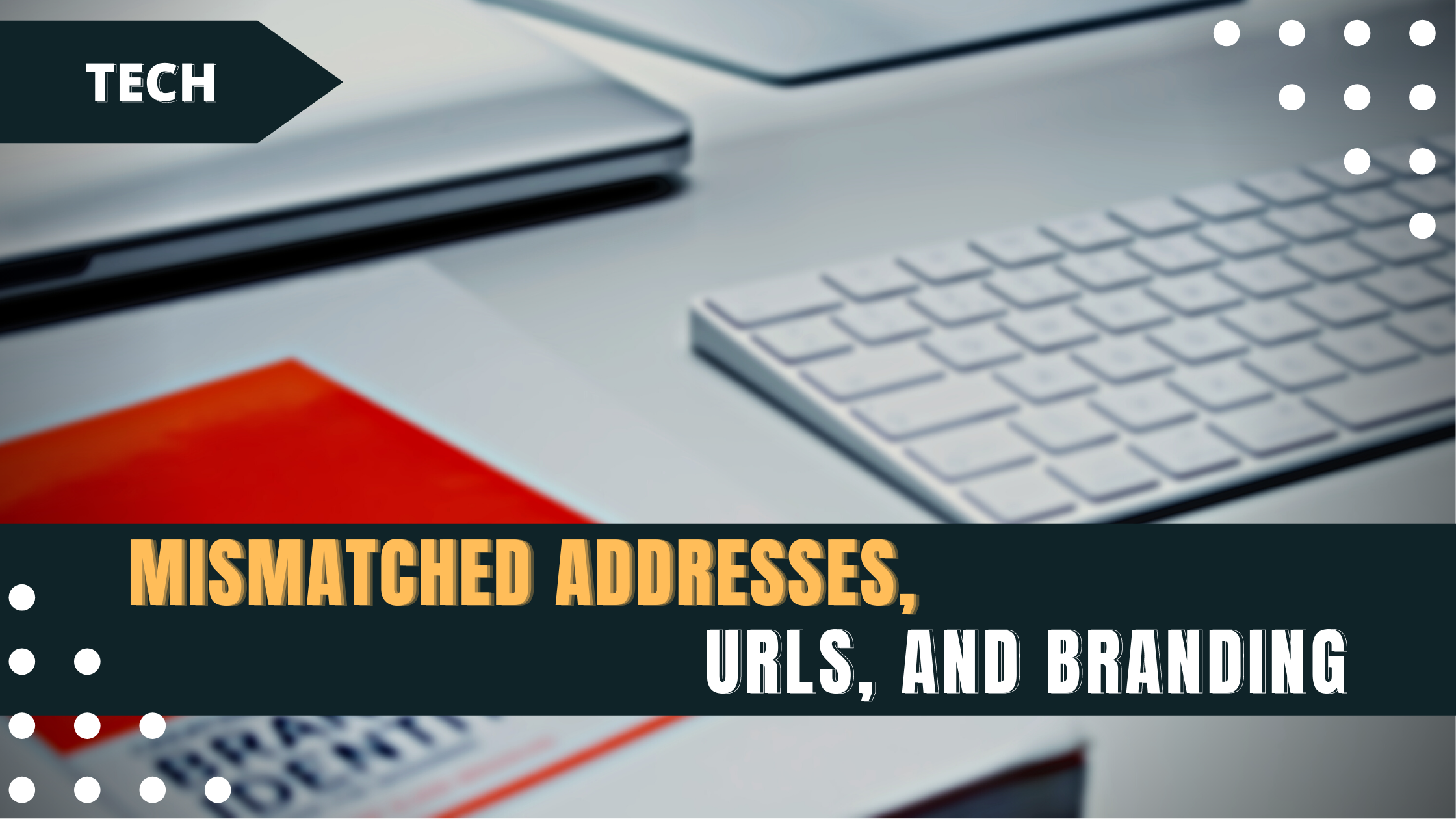
The Importance of Addresses, URLs, and Branding
When it comes to your business, addresses, URLs, and branding are all important. Having mismatched addresses, URLs, and branding can confuse your customers and make your business appear unprofessional.
It's important to have a consistent address and URL for your business. Your customers should be able to easily find your website and know where your business is located. Having mismatched addresses and URLs can make it difficult for customers to find your website or remember your address.
Your branding should also be consistent across all of your channels. Your logo, colors, and messaging should be the same on your website, social media, and other marketing materials. Having mismatched branding can make your business look disorganized and confuse customers about what your brand represents.
Creating a consistent address, URL, and brand for your business is crucial to making a good impression on potential customers. Make sure all of your information is up-to-date and easy to find so you can attract more customers and grow your business.
How to Avoid Mismatched Addresses, URLs, and Branding
If you're not careful, it's easy to end up with mismatched addresses, URLs, and branding. Here are some tips to avoid this problem:
1. Make sure your address and URL match. This may seem like a no-brainer, but it's easy to screw up. For example, if your address is 123 Main Street, your URL should be something like www.123mainstreet.com. Don't use a different URL just because it's available - it will only confuse people and make it harder for them to find your site.
2. Use the same branding across all of your channels. If you have a logo, use it on your website, in your email signature, and on all of your social media profiles. Consistency will help people recognize and remember your brand.
3. Be careful when using abbreviations or acronyms in your address or URL. Again, you don't want to confuse people or make it hard for them to find you online. If you must use an abbreviation or acronym, spell it out the first time you use it so people know what it stands for.
The Different Types of Address, URLs, and Branding
There are four different types of address, URL, and branding: personal, organization, geographic, and generic.
Personal address, URL, and branding are when a person uses their own name as their domain name. For example, John Doe’s personal website would be john-doe.com.
Organizational address, URL, and branding are when a company or organization uses its own name as its domain name. For example, Microsoft’s website would be microsoft.com.
Geographic address, URL, and branding are when a company or organization uses a location as part of its domain name. For example, if Microsoft had a website for its Redmond campus it might be Microsoft-redmond.com.
Generic address, URL, and branding are when a company or organization uses a generic word or phrase as its domain name. For example, Google’s original domain name was google.com because they wanted to be the number one search engine; they didn’t want people to think of them as just another directory like yahoo.com.
The Pros and Cons of Mismatched Addresses, URLs, and Branding
There are several pros and cons to mismatched addresses, URLs, and branding.
On the one hand, using different addresses, URLs, or branding can be helpful in marketing your business to a wider audience. It can also help you to test different marketing strategies without confusing your customer base.
On the other hand, mismatched addresses, URLs, and branding can also create confusion and frustration for your customers. They may not be able to find your business online or know which website is the correct one to visit. Additionally, if you have multiple businesses with mismatched branding, it can be difficult for customers to remember which business is which.
How to Fix Mismatched Addresses, URLs, and Branding
When trying to promote your business, it's important to have a consistent message across all platforms. This means using the same name, address, and URL (web address) for your company. If there are mismatches between these elements, it can be confusing for customers and make it difficult for them to find your website or remember your company's name.
There are a few ways to fix mismatched addresses, URLs, and branding:
1) Use the same name for your business on all platforms.
2) Make sure your website's URL matches your company's name.
3) Use the same address for your business on all platforms.
4) Use consistent branding across all platforms. This means using the same logo, colors, and style on your website, social media pages, and marketing materials.
Following these tips ensures that your company's message is clear and consistent across all channels. This will make it easier for customers to find you online and remember your brand.
Conclusion
If you're running a business, it's important to make sure that your branding is consistent across all of your channels. This means using the same logo, colors, and overall aesthetic on your website, social media accounts, and any other marketing materials. It can be tempting to try to save time by using mismatched addresses, URLs, and branding, but this will ultimately hurt your business in the long run. Your customers will be confused and won't know where to find you online, which could lead them to take their business elsewhere. Spend the time upfront to ensure that your branding is consistent — it'll pay off in the end!
